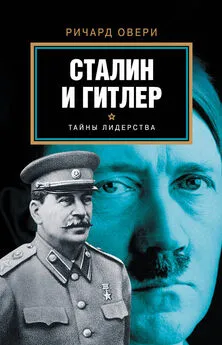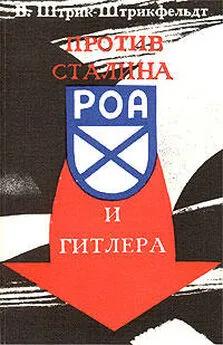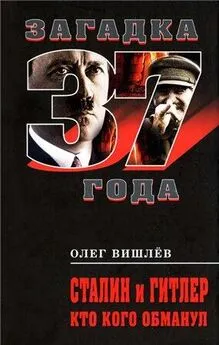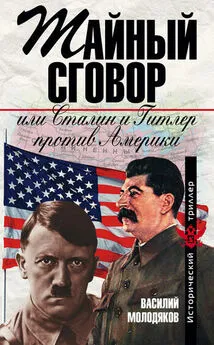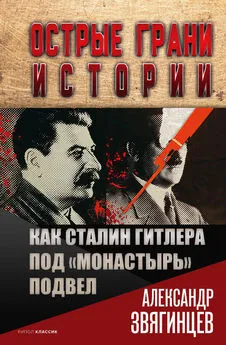Ричард Овери - Сталин и Гитлер
- Название:Сталин и Гитлер
- Автор:
- Жанр:
- Издательство:АСТ
- Год:2015
- Город:Москва
- ISBN:978-5-17-082961-3
- Рейтинг:
- Избранное:Добавить в избранное
-
Отзывы:
-
Ваша оценка:
Ричард Овери - Сталин и Гитлер краткое содержание
Что это были за личности?
Какими были методы их правления?
В чем мораль диктатуры как таковой и к чему она ведет?
На эти и другие наболевшие вопросы отвечает известный британский историк, автор крупных работ по истории Второй мировой войны Ричард Овери.
При сравнение и сопоставление двух режимов Овери рассматривает степень и характер народной поддержки, очаги противостояния и сопротивления, путь к власти каждого из диктаторов и процесс формирования культа личности и т. д.
Сталин и Гитлер - читать онлайн бесплатно полную версию (весь текст целиком)
Интервал:
Закладка:
47. Simon, Nationalism and Policy, p. 240; Crisp, ‘Soviet Language Planning’, p. 38; I. Baldauf ‘Some Thoughts on the Making of the Uzbek Nation’, Cahiers du monde russe, 32 (1991), pp. 86–9.
48. G. O. Liber Soviet Nationality Policy, Urban Growth, and Identity Change in the Ukrainian SSR 1923–1935 (Cambridge, 1992), p. 187.
49. Liber, Soviet Nationality Policy, appendix 14.
50. Martin, ‘Soviet Ethnic Cleansing’, pp. 842–4.
51. Simon, ‘Nationsbildung und “Revolution von oben”’, pp. 233–4, 247–9.
52. Hirsch, The Soviet Union as a Work-in-Progress’, pp. 271–4.
53. Royal Institute of International Affairs Nationalism (London, 1939), p. 78.
54. Crisp, ‘Soviet Language Planning’, pp. 28–9; Bilinsky, ‘Education and the Non-Russian Peoples’, p. 428; Koutaissoff, ‘Literacy and the Place of Russian’, p. 114; Simon, Nationalism and Policy, pp. 150–51.
55. Details in Simon, Nationalism and Policy, pp. 142–5.
56. Simon, Nationalism and Policy, pp. 144–5, 148.
57. Royal Institute of International Affairs, Nationalism, p. 74; S. G. Simonsen ‘Raising “The Russian Question”: Ethnicity and Statehood – Russkie and Rossiya’, Nationalism and Ethnic Politics, 2 (1996), pp. 96–110. See too N. Lynn and V. Bogorov ‘Reimaging the Russian Idea’, in G. Herb and D. Kaplan (eds) Nested Identities: Nationalism, Territory and Scale (Lanham, Md, 1999)-> pp. 101–7; R. Szporluk ‘Nationalism and Communism: refl ections: Russia, Ukraine, Belarus and Poland’, Nations and Nationalism, 4 (1998), pp. 308–11.
58. Royal Institute of International Affairs, Nationalism, p. 79.
59. A. Powell ‘The Nationalist Trend in Soviet Historiography’, Soviet Studies, 2 (1950/1), pp. 373–5; D. Brandenberger National Bolshevism: Stalinist Mass Culture and the formation of Modern Russian National Identity 1931–1956 (Cambridge, Mass., 2002), pp. 71–6, 86–94.
60. M. Perrie ‘Nationalism and History: the Cult of Ivan the Terrible in Stalin’s Russia’, in Hosking and Service (eds), Russian Nationalism, pp. 107–13; K. E. Platt and D. Brandenberger Terribly Romantic, Terribly Progressive, or Terribly Tragic: Rehabilitating Ivan IV under I. V. Stalin’, Russian Review, 58 (1999), pp. 637–8.
61. R. Bergan Sergei Eisenstein: a Life in Confl ict (New York, 1997), pp. 296–306; see too D. Brandenberger ‘Soviet social mentalite and Russo-centrism on the eve of war’, Jahrbuch für die Geschichte Osteruropas, 44 (1996), pp. 388, 392–4.
62. R. Stites Russian Popular Culture: Entertainment and Society since 1900 (Cambridge, 1992) p. 57.
63. Royal Institute of International Affairs, Nationalism, p. 79; see too Lynn and Bogorov, ‘Reimaging the Russian Idea’, pp. 107–8.
64. Martin, ‘Soviet Ethnic Cleansing’, pp. 830–31, 837, 845–9.
65. N. Bugai The Deportation of Peoples in the Soviet Union (New York, 1996), pp. 28–31; Simon, Nationalism and Policy, pp. 199–200; Pohl, Ethnic Cleansing, pp. 9–19.
66. Martin, ‘Soviet Ethnic Cleansing’, pp. 853–7.
67. P. J. Duncan ‘Ukrainians’, in G. Smith (ed.) The Nationalities Question in the Soviet Union (London, 1990), pp. 96–7.
68. Simon, Nationalism and Policy, pp. 162–3.
69. W. Taubman Khrushchev: the Man and his Era (New York, 2002), p. 99.
70. Pohl, Ethnic Cleansing, pp. 1–3.
71. On Esperanto speakers see K. Sword (ed.) The Soviet Takeover of the Polish Eastern Provinces, 1939–1941 (London, 1991), appendix 3c ‘NKVD Instructions Relating to “Anti-Soviet Elements”’.
72. K. Sword Deportation and Exile: Poles in the Soviet Union, 1939–48 (London, 1994), pp. 25–7; J. Gross Revolution from
Abroad: the Soviet Conquest of Poland’s Western Ukraine and Western Belorussia (Princeton, NJ, 1988), pp. 193–4.
73. Tolz, ‘Deportations of Ethnic Groups’, p. 162.
74. Sword, Deportation and Exile, p. 22.
75. Pohl, Ethnic Cleansing, p. 5; Tolz, ‘Deportation of Ethnic Groups’, pp. 161–7; Bougai, Deportation of Peoples, passim.
76. Tolz, ‘Deportation of Ethnic Groups’, p. 164.
77. Tolz, ‘Deportation of Ethnic Groups’, p. 166.
78. N. Levin Paradox of Survival: the Jews in the Soviet Union since 1917 (2 vols, London, 1990), vol. i, pp. 477–9, 484.
79. Stalin, Works, vol. ii, pp. 307–8, 345, 359; J. Miller ‘Soviet Theory on the Jews’, in L. Kochan (ed.) The Jews in Soviet Russia since 1917 (Oxford, 1978), pp. 49–52.
80. J. B. Schechtman ‘The USSR, Zionism and Israel’, in Kochan, Jews in Soviet Russia, pp. 106–8.
81. Z. Gitelman ‘Soviet Jewry before the Holocaust’, in Z. Gitelman (ed.) Bitter Legacy: Confronting the Holocaust in the USSR (Bloomington, Ind., 1997), p. 5; B. Pinkus ‘La participation des minorities nationals extraterritoriales à la vie politique et publique de l’Union Soviétique, 1917–1939’, Cahiers du monde russe, 36 (1995) pp. 299–300.
82. Schechtman, ‘The USSR, Zionism and Israel’, p. 118.
83. Gitelman, ‘Soviet Jewry’, p. 6; Smith, ‘Education of National Minorities’, p. 30; see too S. W. Baron The Russian Jew under Tsars and Soviets (2nd edn, New York, 1987), pp. 226–34.
84. M. Altshuler Soviet Jewry on the Eve of the Holocaust (Jerusalem, 1998), pp. 30, 146; Levin, Paradox of Survival, pp. 134–
43, 233; E. Lohr ‘The Russian Army and the Jews: Mass Deportations, Hostages, and Violence during World War P, Russian
Review, 60 (2001), p. 408 on the Pale.
85. Altshuler, Soviet Jewry, p. 146.
86. Levin, Paradox of Survival, pp. 275–6.
87. Altshuler, Soviet Jewry, p. 26.
88. C. Abramsky ‘The Biro-Bidzhan Project, 1927–1959’, in Kochan, Jews in Soviet Russia, pp. 70–71, 73–7.
89. B.-C. Pinchuk Shtetl Jews under Soviet Rule: Eastern Poland on the Eve of the Holocaust (London, 1990), pp. 55, 129–31.
90. Pinchuk, Shtetl Jews, p. 39.
91. Schechtman, ‘The USSR, Zionism and Israel’, p. 124.
92. S. Sebag Montefi ore Stalin: the Court of the Red Tsar (London, 2003), pp. 509–10; A. Vaksberg Stalin against the Jews (New York, 1994), pp. 159–81; Levin, Paradox of Survival, pp. 393–4.
93. For details see B. Pinkus The Jews of the Soviet Union: the History of a National Minority (Cambridge, 1993), pp. 142–50, 174–7; Y. Rapaport The Doctors’ Plot: Stalin’s Last Crime (London, 1991); J. Brent and V. Naumov Stalin’s Last Crime: the Plot against the Jewish Doctors, 1948–1953 (London, 2002).
94. A. Blakely Russia and the Negro (Washington DC, 1986), p. 101.
95. Hirsch, ‘Race without Racial Polities’, pp. 32–5; A. Weiner ‘Nothing but Certainty’, Slavic Review, 61 (2002), pp. 44–51. See for a different view E. D. Weitz ‘Racial Politics without the Concept of Race: Reevaluating Soviet Ethnic and National Purges’, Slavic Review, 61 (2002), pp. 1–29.
96. Hirsch, ‘Race without Racial Polities’, p. 36.
97. Akten zur deutschen auswärtigen Politik, Ser. D, vol. I (Baden-Baden, 1950), p. 25, ‘Niederschrift über die Besprechung in der Reichskanzlei’, 5 November 1937.
98. S. Lauryssens The Man who Invented the Third Reich (Stroud, 1999), pp. 140, 146, 151.
99. J. W. Young Totalitarian Language: Orwell’s Newspeak and its Nazi and Communist Antecedents (Charlottesville, Va., 1991), p. 108.
100. M. Quinn The Swastika: Constructing the Symbol (London, 1994), pp. 21, 116, 130–33.
101. Feinstein, ‘Deutschland über alles?’, pp. 506–9; J. W. Baird To Die for Germany: Heroes in the Nazi Pantheon (Bloomington, Ind., 1990), pp. 79–80, 264–5.
102. A. Kruck Geschichte des Alldeutschen Verbandes 1890–1939 (Wiesbaden, 1954), p. 216.
103. R.J. O’Neill The German Army and the Nazi Party 1933–1939 (London, 1966), p. 87.
104. Royal Institute of International Affairs, Nationalism, p. 78.
105. J. A. Leopold Alfred Hugenberg: The Radical Nationalist Campaign against the Weimar Republic (New Haven, Conn., 1977), pp. 149–63.
106. Kruck, Geschichte des Alldeutschen Verbandes, pp. 216–17.
107. Herb, Under the Map of Germany’, pp. 132–40.
108. F. L. Kroll Utopie als Ideologie: Geschichtsdenken und politisches Handeln im Dritten Reich (Paderborn, 1998), pp. 217–2.0; see too A. A. Kallis ‘To Expand or not to Expand? Territory, Generic Fascism and the Quest for an “Ideal Fatherland’”, Journal of Contemporary History, 38 (2003), pp. 237–60; J. Hermand Der alte Traum vom neuen Reich: Völkische Utopien und Nationalsozialismus (Frankfurt am Main, 1988), pp. 321–33.
109. F. El-Tayeb ‘“Blood is a very special Juice”: Racialized Bodies and Citizenship in Twentieth-Century Germany’, International Review of Social History, 44 (1999), Supplement, pp. 149–53, 162.
110. E. Syring Hitler: seine politische Utopie (Frankfurt am Main, 1994), p. 210.
111. Vopel, ‘Radikaler, völkischer Nationalismus’, p. 164.
112. M. Dean The Development and Implementation of Nazi Denaturalization and Confi scation Policy up to the Eleventh Decree of the Reich Citizenship Law’, Holocaust and Genocide Studies, 16 (2002), pp. 218–20.
113. H. Kaden and L. Nestler (eds) Dokumente des Verbrechens: aus Akten des Dritten Reiches 1933–1945 (3 vols., Berlin, 1993), vol. i, pp. 60–62, Reichsbürgergesetz, 15 September 1935; Gesetz zum Schütze des deutschen Blutes und der deutschen Ehre, 15 September 1935.
114. P. Weindling Health, Race and German Politics between National Unifi cation and Nazism 1870–1945 (Cambridge, 1989), p. 530; C. Lusane Hitler’s Black Victims (New York, 2002).
115. Dokumente des Verbrechens, vol. i, pp. 66–7, Erste Verordnung zum Reichsbürgergesetz, 14 November 1935.
116. B. Miller-Lane (ed.) Nazi Ideology before 1933: A Documentation (Manchester, 1978), p. 115 from ‘Marriage Laws and the Principles of Breeding’; Heinemann, “Rasse, Siedlung, pp. 62–6; D. Bergen The Nazi Concept of “Volksdeutsche” and the Exacerbation of Anti-Semitism in Eastern Europe 1939–1945’, Journal of Contemporary History, 29 (1994), pp. 569–72 for details of the ‘Volksliste’.
117. Heinemann, ‘Rasse, Siedlung’, pp. 190–95.
118. Heinemann, ‘Rasse, Siedlung’, pp. 64–5; on the fi gures for those recorded, pp. 600–602.
119. Connelly, ‘Nazis and Slavs’, pp. 18–19; see too G. Bock ‘Gleichheit und Differenz in der nationalsozialistischen Rassenpolitik’, Geschichte und Gesellschaft, 19 (1993), pp. 277–310.
120. R. Lukes The Forgotten Holocaust: the Poles under German Occupation 1939–1944 (Lexington, Kty, 1986), p. 8; see too J. T. Gross Polish Society under German Occupation: the Generalgouvernement, 1939–1944 (Princeton, NJ., 1979), pp. 195–8 on German nationality policy.
121. Connelly, ‘Nazis and Slavs’, p. 10.
122. Lukes, Forgotten Holocaust, p. 8; G. Aly ‘Final Solution’: Nazi Population Policy and the Murder of the European Jews (London, 1999), pp. 108–13; Kroll, Utopie, p. 220. See too W. Pyta ‘“Menschenökonomie”: Das Ineinandergreifen von ländlicher Sozialraumgestaltung und rassenbiologischer Bevölkerungspolitik im nationalsozialistischen Staat’, Historisches Zeitschrift, 273 (2001), pp. 31–94.
123. G. Lewy The Nazi Persecution of the Gypsies (Oxford, 2000), pp. 43–5, 47.
124. Lewy, Persecution of the Gypsies, pp. 52–3; E. Thurner National Socialism and Gypsies in Austria (Tuscaloosa, Ala., 1998), pp. 11–12.
125. Thurner, Gypsies in Austria, pp. 38–9.
126. Lewy, Persecution of the Gypsies, pp. 66–9.
127. G. Lewy ‘Gypsies and Jews under the Nazis’, Holocaust and Genocide Studies, 13 (1999), pp. 385–7.
Читать дальшеИнтервал:
Закладка:
